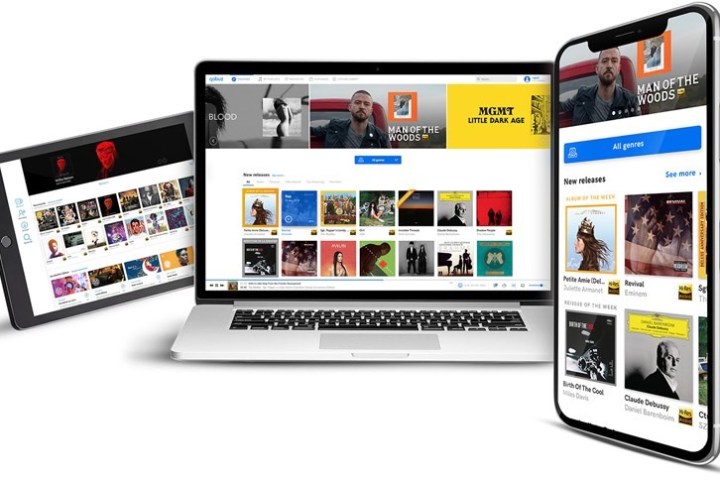
If you’re a fan of high-quality digital audio, you now have another option when it comes to streaming music services. French company Qobuz, long known for its excellent collection of hi-res tracks, launched in the U.S. with four different price plans:
- Premium: $10 per month, or $100 per year, for MP3-quality streaming at 320 kbps
- Hi-Fi: $20 per month, or $200 per year, for CD-quality streaming using FLAC 16-bit at 44.1 KHz
- Studio: $25 per month, or $250 per year, for hi-res quality streaming using FLAC 24-bit at up to 192 KHz
- Sublime+: $300 per year, for all of the benefits of Studio, and discounted prices on hi-res purchases from the online store
Tidal subscribers will be the obvious market for Qobuz as it looks to get a toe-hold in the U.S. market, because of that service’s previous exclusivity in the hi-res streaming game. Not only does Qobuz boast 170,000 albums in hi-res format (Tidal has not disclosed the size of its hi-res catalog), all of those tracks are available for streaming or purchase, something Tidal does not offer. Whether or not music lovers will be willing to spend the extra $5 per month for access to all of those tracks is something we’ll have to wait and see. Tidal’s $20 per month Hi-Fi plan is all you need to access its Masters hi-res collection, but the same quality costs $25 per month on Qobuz for its Studio plan.
Another difference is the technology used. Tidal provides all of its hi-res music in MQA format, which greatly reduces the file sizes (and thus the bandwidth) needed to reproduce music in 24-bit detail. Qobuz uses the older FLAC format, which uses considerably larger files to achieve the same quality. When using Wi-Fi — especially if you don’t have to worry about data caps — the difference is largely meaningless. Mobile users may feel differently.
Speaking of mobile users, it’s worth noting that even though Qobuz delivers hi-res audio with its Studio and Sublime+ plans, you still need a compatible device to actually hear the improved quality. Using the Qobuz app on an iPhone (whether using AirPods or wired earphones) will down-convert hi-res files to 16-bit/44.1 KHz, unless you’re using a dedicated, external DAC via the lightning port. Support for hi-res FLAC files on Android devices vary by manufacturer and model, but many of them can do it.
But even Qobuz’s entry price may be enough to woo Spotify, Apple Music, and Google Play Music subscribers. A standard component of the Qobuz offering is access to digital booklets for each album, from within the Qobuz app — something Apple offers, but only within the iTunes app on a PC or Mac. The service curates custom playlists, has artists interviews, and an interactive feature format it calls Panorama. Qobuz claims it has a catalog of over 40 million tracks. That is 5 million more than Spotify’s claimed library, but 5 million less than Apple’s.
If you’re curious to try it out, Qobuz offers an industry-standard 30-day free trial period on all of its plans except Sublime+.



